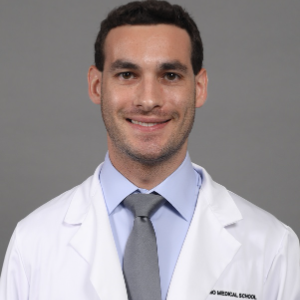Title : Multiple Sclerosis Disease Modifying Pharmacotherapies Effect on EBV Infection
Abstract:
Multiple Sclerosis (MS) is an autoimmune disease targeting myelin in the central nervous system. Most disease modifying therapies (DMTs) for MS function via immunomodulation by a variety of modalities, some of which are immunosuppressive and some which are not. In this study we compare various DMT regimens to metrics of Epstein-Barr Virus (EBV) infection.
Fifty-nine MS patients participated, of which 46 were on DMT regimens of Aubagio, Avonex, Betaseron, Copaxone, Gilenya, Mayzent, Plegridy, Rebif, Tecfidera, or Tysabri. Participants on DMT regimens were categorized by immunosuppressive vs non-immunosuppressive therapies per guidance from a regional neurology physicians’ group, with immunosuppressive DMTs including Avonex, Betaseron, Copaxone, Plegridy, and Rebif. Fifty-two volunteers without MS served as controls. Peripheral blood was collected from each participant in a red-top clot tube to isolate serum. A portion of serum was analyzed by quantitative PCR. Results were reported as qualitative incidence of infection (number of participants with >0 viral copies), and quantitatively as the mean copy number for participants with detectable viral copies. Another portion of serum was incubated with a microarray chip containing 110 unique EBV peptide epitopes. Secondary anti-IgG fluorescently conjugated antibodies were added, and the resulting chips were analyzed for fluorescence to determine IgG reactivity to each EBV epitope. ANOVA and T-tests were used to compare metrics between the groups with significance determined at p<0.05.
Rates of infection in control, MS without DMT, MS with immunosuppressive DMT, and MS with non-immunosuppressive DMT groups were 51%, 50%, 8%, and 10% respectively. For those with detectable copies the mean ± standard deviation copy numbers were 57.30 ± 46.24, 61.80 ± 62.72, 22.75 ± 7.28, and 26.60 ± 13.58 respectively, with ANOVA p=0.6261. IgG antibody reactivity per 110 epitopes were 35.52 ± 20.81, 38.38 ± 14.48, 42.13 ± 14.71, and 36.25 ± 15.62 respectively, with ANOVA p=0.6473. T-testing between individual groups did not yield significance for mean viral copy numbers nor antibody reactivity.
Rates of EBV infection were notably higher in the control and MS without DMT groups, which contradicts the notion that participants on immunomodulating DMTs might have greater susceptibility to infection. However, our study did not yield significant differences between MS participants with different DMT regimens or the control group in terms of EBV viral burden or antibody reactivity. This suggests that the DMT regimens assessed here do not result in increased susceptibility to EBV. Differences in EBV infection rates are a surprising result that warrants further investigation.
What will audience learn from your presentation?
- This presentation informs the audience about the effects of disease modifying pharmacotherapies on the susceptibility of multiple sclerosis patients to viral infections.
- Audience members will gain an understanding of how viral burden of Epstein Barr Virus compares between MS patients with immunosuppressive pharmacotherapies, non-immunosuppressive pharmacotherapies, and patients without MS-related pharmacotherapies.
- Audience members will observe the impact of various MS-related pharmacotherapies on Epstein Barr Virus burden and antibody reactivity, which may inform decision making for pharmacotherapy intervention or specific drug choice.




